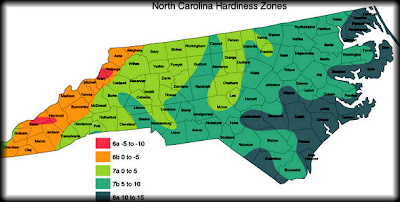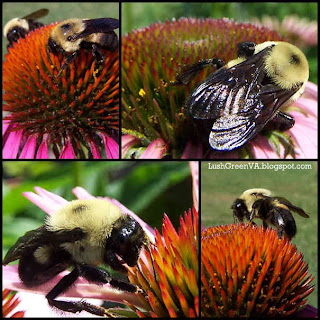|
Growing bamboo for sustainability may not be a right fit for everyone for numerous reasons. These may include a shortage of yard space, lack of conformity with the rest of the landscape, lack of devotion or time needed for harvesting etc.
But for others who are open-minded & into sustainability - is it really such a bad idea? Bamboo is extremely versatile and also a very green plant, generating 35% more oxygen than trees while reducing runoff by collecting extra nitrogen found in soil.
My connection with bamboo
As long as I have been vegetable gardening, I have been using bamboo sticks religiously to help support my plants The benefits for me include their ability to naturally blend in with the garden and their ability to bend & conform with the wind & weight of the plants.
Every so often when driving around (even in Virginia), I come across an area of bamboo. For some reason, this type of vegetation always draws my attention. Perhaps it's because they "seem" too tropical to grow or thrive in this region. That, however, is a widespread misconception - that bamboo can only grow in wet climates.
While bamboo is not a common plant in American gardens, especially the farther north you go, several species are native to USA and many others can tolerate temperatures as low as 0 degrees Fahrenheit (or lower). There are documented cases of bamboo not only surviving New England winters, but actually thriving there.
Bamboo has a reputation as being a hardy, tough plant. Curiously, although tree-like in many ways, bamboo is actually a grass - with giant bamboos being the largest member of the grass family. Their size can range from just a few inches high (low, clumping type), to a height of over 100 feet. Most bamboo prefer sun, but some can live in full shade (though growing smaller). They can be successfully planted on sloped surfaces and do best in sandy soil or red clay, but are tolerable with most soil types. Excessively wet soil should be avoided.
A variety of uses
While the shoots of the plant can be eaten (a topic best left for another persons blog), practical uses for bamboo include making fences, scaffolds, trellises, bridges, ladders and a variety of crafts (the possibilities are as varied as a person's imagination). In fact, bamboo is said to be used by more humans for more different purposes than any other plant.
 |
| Bamboo Fence |
Though Bamboo can be grown in containers, this is not practical for sustainable use. For this purpose, they should be grown in the ground.
Because bamboo roots are aggressive 'runners,' spreading quickly, extra attention should be taken when initially planning & planting bamboo. To help avoid spreading, a 2-3 foot deep solid barrier should be initially installed.
With a right eye for landscape design (and a potpourri of sizes & species to choose from), the possibilities of landscaping or decorating your space are many. Since these plants can be split, you theoretically never have to buy more - just split & transplant yearly. And best of all, like your lawn, bamboo is a grass & thus it is low maintenance.
Sustainability for gardeners
Gardeners may be most familiar with bamboo for its use as a plant stake.
 |
| Plant stakes |
As gardeners, we are becoming more self-sufficient every year, so why not entertain the idea of growing our own bamboo plants? For the very least, the plant should pay for itself with just a few harvests of canes for our personal garden use (have you seen the price of bamboo sticks recently?).
But before you go out buying - then planting - some bamboo to use as sticks for next year's garden, think again. You'll need an initial investment of time to reap these benefits. It's said that culms (the part use for sticks) reaches its strongest point from 2 to 5 years of age. Before using, they will also need to be dried on a flat surface through the winter.
Finding the right bamboo
If interested in growing bamboo for sustainable or general landscaping use, do extensive internet research and/or try to find a nearby bamboo nursery and come prepared with questions, facts & requirements specific to your needs. These may include your area climate (rainfall, hottest/coldest temps etc.), height requirement, sun or shade, soil conditions, large or small plot of land, and will the bamboo be used for decor, privacy screen or as a windbreak?
Helpful Bamboo Links:
American Bamboo Society
Complete Bamboo (Bamboo Information Resource)
Bamboo Bob's Blog
Wikipedia
*DISCLAIMER: Before using any information contained in this blog entry, you are advised to do your own due diligence & research on the topic and/or consult with a qualified professional. |
|
|
|
|
|





























